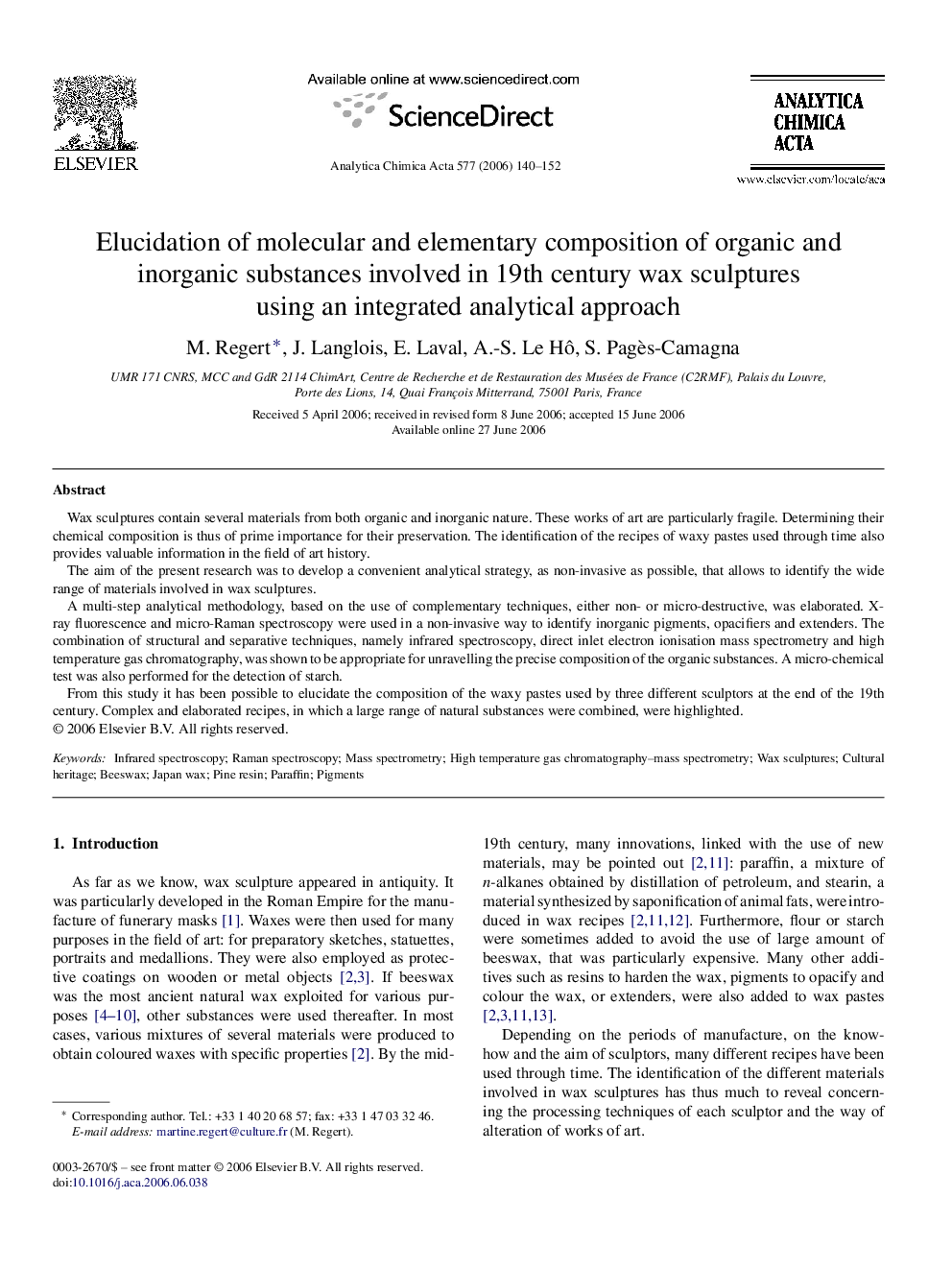| Article ID | Journal | Published Year | Pages | File Type |
|---|---|---|---|---|
| 1172084 | Analytica Chimica Acta | 2006 | 13 Pages |
Wax sculptures contain several materials from both organic and inorganic nature. These works of art are particularly fragile. Determining their chemical composition is thus of prime importance for their preservation. The identification of the recipes of waxy pastes used through time also provides valuable information in the field of art history.The aim of the present research was to develop a convenient analytical strategy, as non-invasive as possible, that allows to identify the wide range of materials involved in wax sculptures.A multi-step analytical methodology, based on the use of complementary techniques, either non- or micro-destructive, was elaborated. X-ray fluorescence and micro-Raman spectroscopy were used in a non-invasive way to identify inorganic pigments, opacifiers and extenders. The combination of structural and separative techniques, namely infrared spectroscopy, direct inlet electron ionisation mass spectrometry and high temperature gas chromatography, was shown to be appropriate for unravelling the precise composition of the organic substances. A micro-chemical test was also performed for the detection of starch.From this study it has been possible to elucidate the composition of the waxy pastes used by three different sculptors at the end of the 19th century. Complex and elaborated recipes, in which a large range of natural substances were combined, were highlighted.
